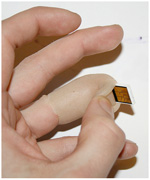Announcing Billix 0.27 and... SuperBillix 0.27!

Billix debuted in the August 2008 issue of Linux Journal, and it's gone thru incremental updates since then. I've tried to keep it on the same track as Ubuntu updates, more-or-less, though I've had varying levels of success with that. However, Billix 0.27 released only a few days after Ubuntu 10.04LTS did. As usual, Billix fits easily on a 256MB USB key or higher, and is available from the usual spot (https://sourceforge.net/projects/billix).
Billix 0.27 consists of:
- Ubuntu 10.04LTS (Lucid Lynx) netinstall
- Ubuntu 9.10 (Karmic Koala) netinstall
- Ubuntu 8.04LTS (Hardy Heron) netinstall
- Damn Small Linux 4.2.5
- Fedora 12 netinstall
- Centos 5.4 netinstall
- Centos 4.8 netinstall
- Debian Squeeze netinstall
- Debian Lenny netinstall
- Memtest86+ Memory Tester
- Windows Password Cracker
- DBAN disk wiping tool
However, as a bonus, I finally released something I've been playing with for a while - SuperBillix. SuperBillix's initial version is also 0.27, and I intend for its version number to track along with regular Billix. SuperBillix is intended for use with a 1GB USB key or larger, and it is basically regular Billix, along with the entire current Ubuntu LiveCD shoehorned onto the key. The reasoning for doing this is simple - I don't ever have a CD with me, but I almost always have a USB key, and installing Ubuntu is a lot faster when you have the release media with you. Ubuntu also makes an excellent recovery environment, so it's another option that can compliment Damn Small Linux for that purpose. Ubuntu 10.04 LTS also supports a neat cheat code option - the "toram" option. When you specify that in addition to the menu number to boot from the LiveCD, the system will create a RAMdisk and copy the squashfs filesystem that encompasses the LiveCD into it, allowing you a lightning-fast Ubuntu system and installation, even on older hardware. Needless to say, the amount of RAM in the machine must be able to support that RAMdisk. Since the squashfs filesystem of the LiveCD expands out to about 930MB, your machine should have a minimum of 1.5GB of RAM to use the "toram" option.
Installing SuperBillix on your USB key is a little different than standard Billix. I had to use "cpio" rather than "tar" in order to get it to work. Simply download the cpio.gz file, and put it in a safe place. Mount your USB key on your Linux computer, and from a terminal, change to that directory using a command like "cd /media/disk". Then run "zcat | cpio -idv". The cpio.gz will unpack and install on your USB key. Once that's done, run "syslinux -s ", where device is your USB key, like "/dev/sdc1", and that's it! You may get a warning saying the file ldlinux.sys is readonly, should you overwrite? Simply say yes to it, and your SuperBillix key is ready.
There are a few things I'd like to do with Billix and SuperBillix yet, and I'd love to get some help with this. I'll need to get a SVN repository started on Sourceforge first, which I have yet to get done, but once I do that, here are the things I envision working on next:
* Move completely to ISO format to allow CD or DVD burning, and use unetbootin to create the Billix/SuperBillix USB keys. I have prototyped this, but have yet to get unetbootin to create a syslinux.cfg file and menu that I am pleased with.
* Move to a graphical menu, with a text fallback for serial consoles. It'd be great to get a little more polish in Billix.
* Move most of the files into subdirectories to clean up the USB key filesystem. It annoys me that I've not done this yet.
I'm open to suggestions, constructive criticism, and help with the project. Feel free to chime in!

